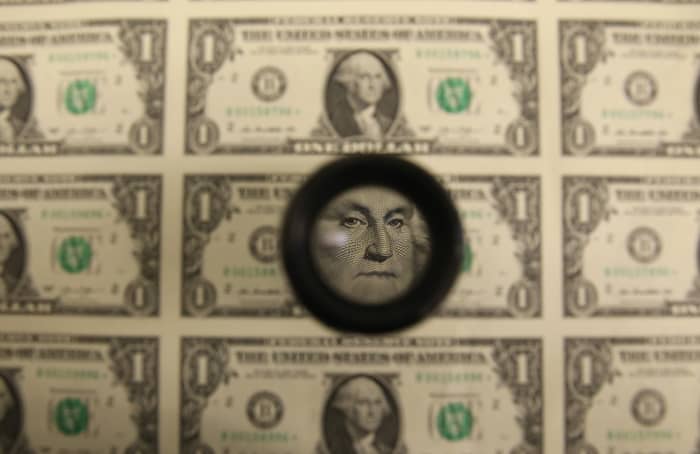A rising U.S. dollar is raising hackles overseas and getting the attention of investors at home and abroad. But it isn’t clear that authorities can do much about the rise — or that it’s yet likely to undercut U.S. equities.
“The dollar’s rise is starting to unnerve everyone. Last night, both Japanese and Chinese officials attempted to thwart the greenback’s rally, but weren’t effective,” said Edward Moya, senior market analyst at Oanda, in a note.
Indeed, the Japanese yen
USDJPY,
“Excessive moves in foreign-exchange rates have negative effects on the economy by bringing uncertainties to companies and households,” said Masato Kanda, vice finance minister for international affairs, according to The Wall Street Journal. “We won’t rule out any option and will take appropriate action, if this trend continues.”
China’s central bank, meanwhile, set its daily reference rate for the yuan higher than market participants had anticipated Wednesday and took other steps analysts viewed as an effort to support the currency
USDCNY,
Also, European Central Bank officials were intent on emphasizing the scope for a further interest-rate increase despite a round of dismal German economic data, Moya noted. The euro
EURUSD,
“FX talk is cheap if it is doesn’t come with convincing data/market conditions that supports decisive and meaningful action,” Moya wrote. “The ECB will struggle to convince markets they can hike into a deteriorating outlook. Japanese officials are still only about halfway through their best verbal intervention threats. A gradual declining yuan is not China’s biggest problem, the property crisis and contagion risks are getting too very uncomfortable levels.”
The ICE U.S. Dollar Index DXY, a measure of the greenback against a basket of six major currencies, was up 0.1% at 104.87, after ticking above the 105 threshold Wednesday for the first time since March.
The dollar’s gains have been credited to resilient U.S. economic data, which has left the U.S. looking better than it’s developed market peers. And even if the Federal Reserve is finished, or nearly finished, raising interest rates to combat inflation, strong data means they’re expected to stay elevated — a view only enhanced this week after an extension of crude-oil production cuts by Saudi Arabia and Russia sent Brent crude back above $90 a barrel.
Rising oil prices served to lift Treasury yields, boosting the dollar’s appeal.
Higher yields and accompanying concerns about the Fed’s rate path were serving to weigh on U.S. stocks this week. The S&P 500 SPX slumped 0.9% on Wednesday, while the Dow Jones Industrial Average DJIA lost more than 200 points, or 0.6%.
See: Stock-market investors just got reminded that the inflation fight isn’t over
For stock-market investors, a strong dollar can, but isn’t necessarily, a problem. In particular, it can be a hurdle for companies who derive a big share of their income from sales overseas, with a stronger dollar making their exports more expensive to foreign buyers.
But the dollar’s moves likely aren’t sufficient to create real problems just yet, said Ross Mayfield, investment strategy analyst at Baird Private Wealth Management.
So far, the dollar’s rise looks more like a pop higher in a downtrend rather than a revived rally, Mayfield told MarketWatch, in a phone interview. The dollar had soared in 2022 and was described as a “wrecking ball” for financial markets.
The ICE U.S. Dollar Index, while trading near a six-month high, remains down nearly 5% from its year-ago level and is off 8.6% from a more-than-two-decade high hit last fall just below 115.
Mayfield said he suspects the dollar is likely to level off and then soften, rather than meaningfully extend its recent rally.
“I think you’d start to hear a lot more about it if [the dollar index] broke through and made a new 2023 high and the rally started to accelerate,” putting those late 2022 highs in reach, Mayfield said.







